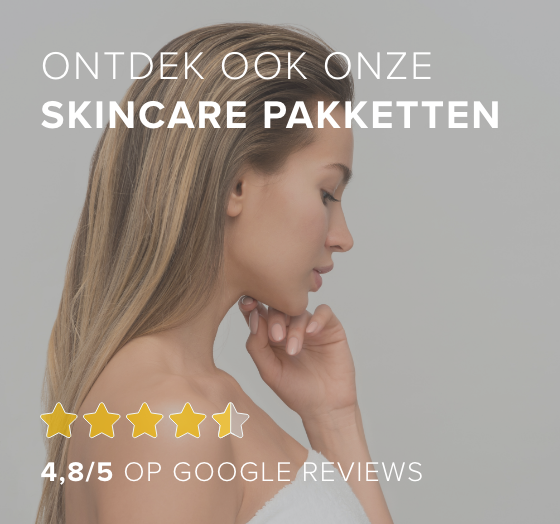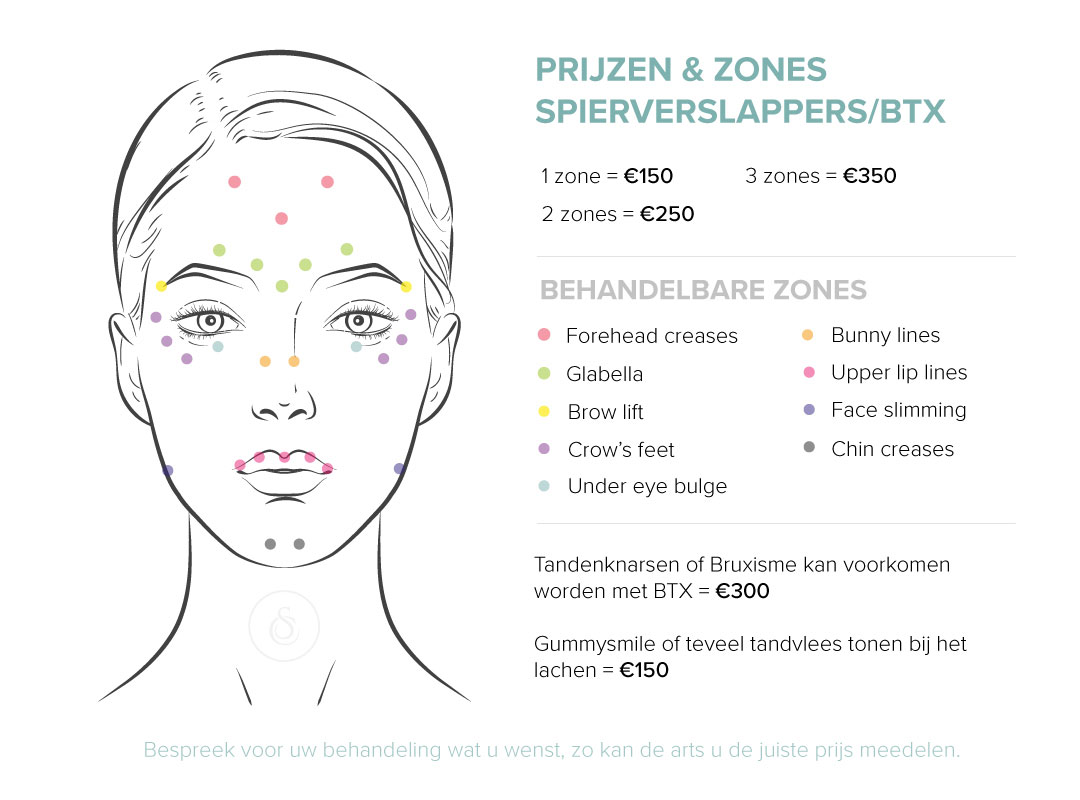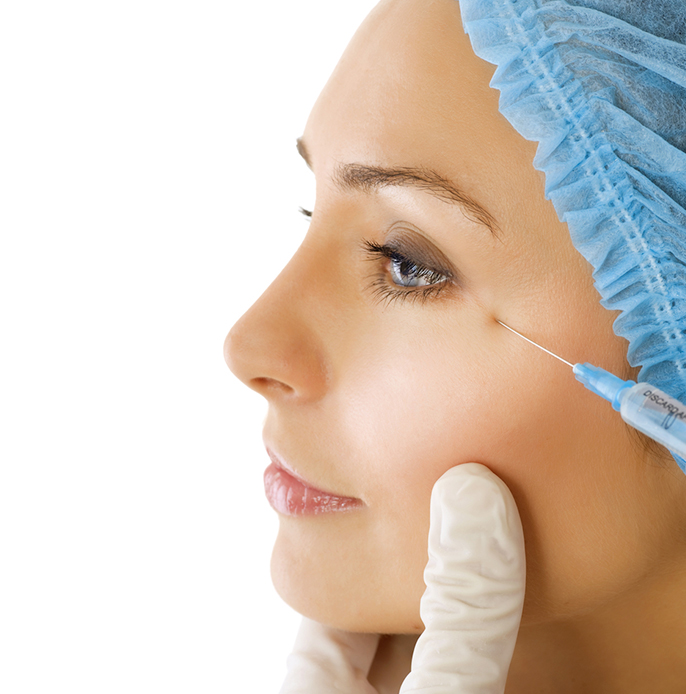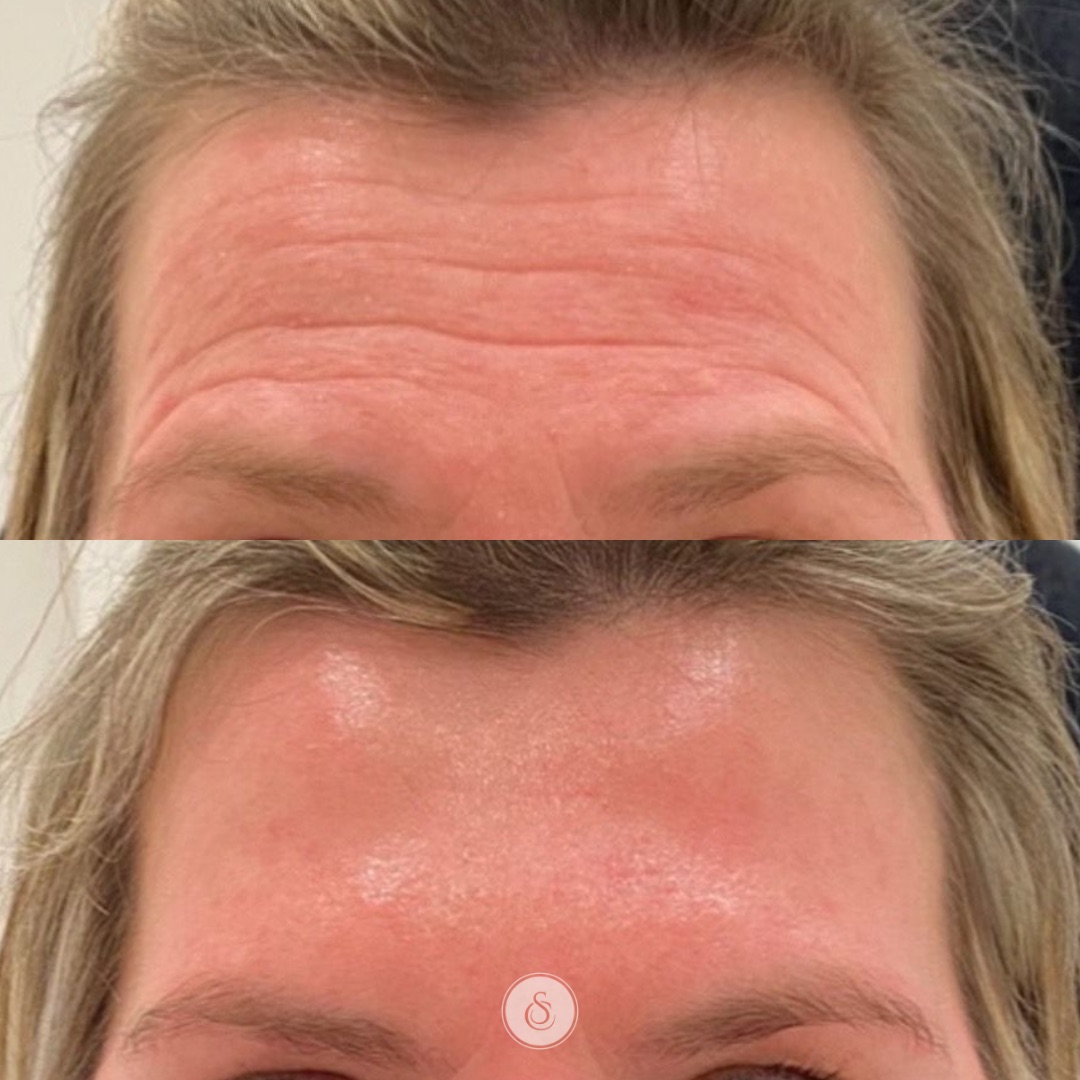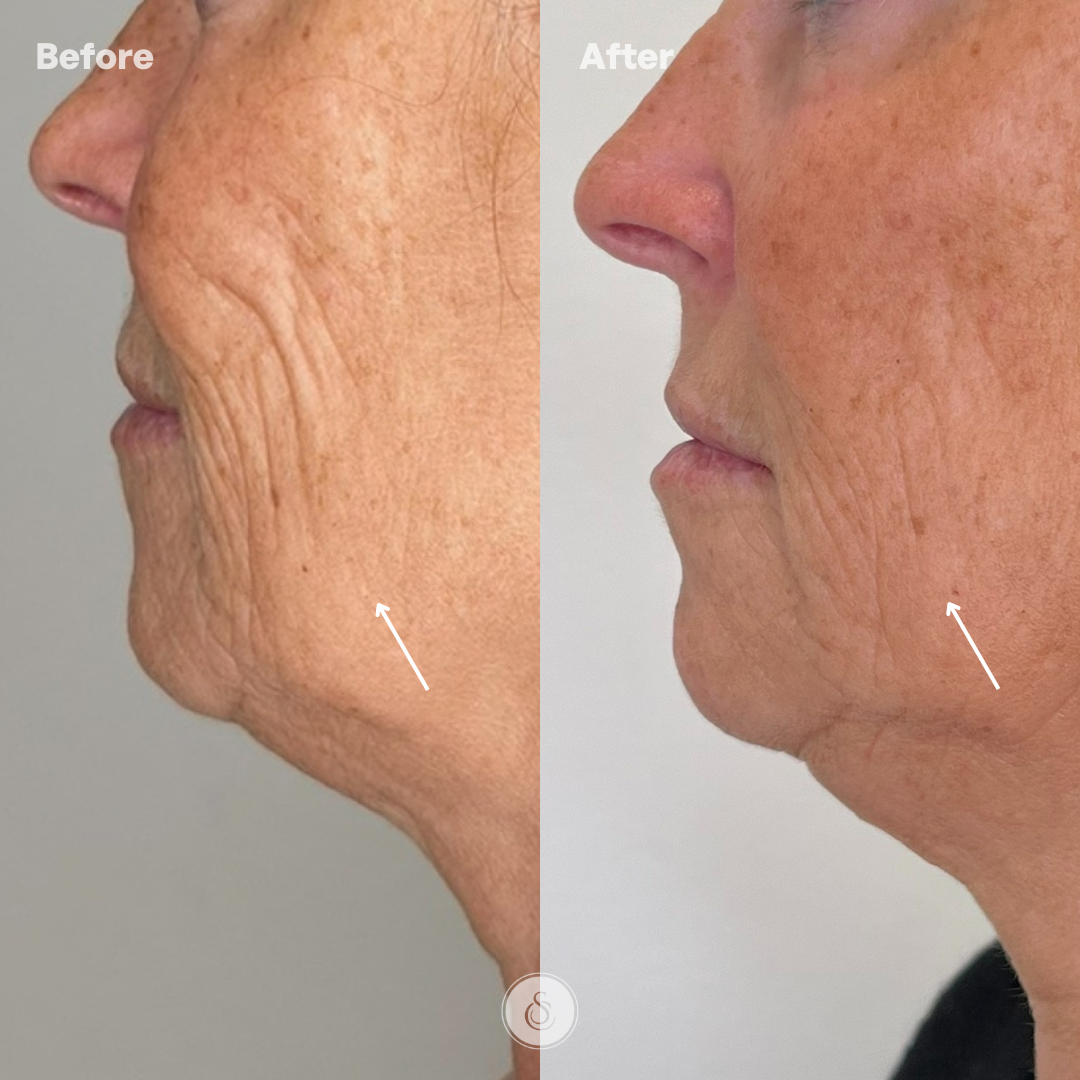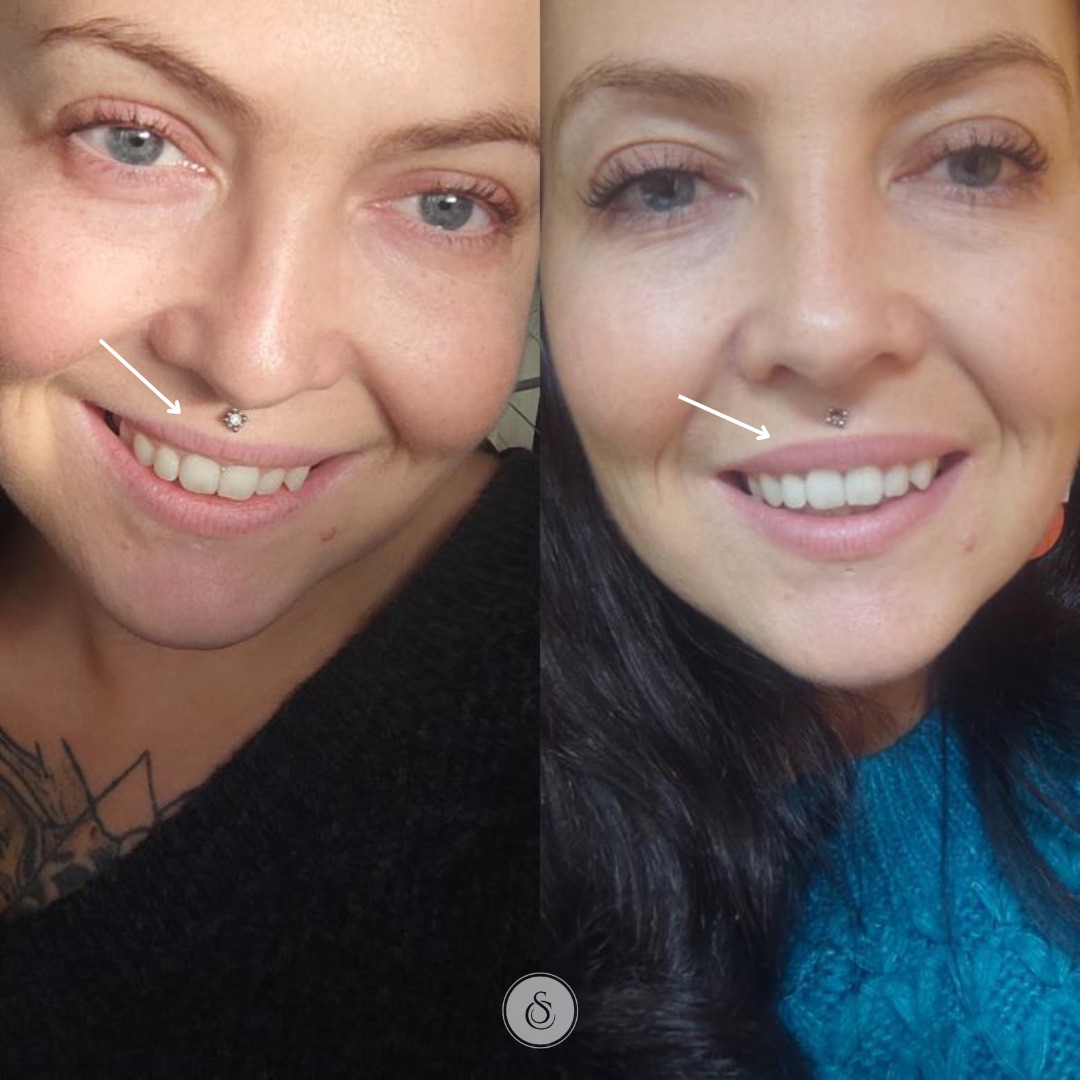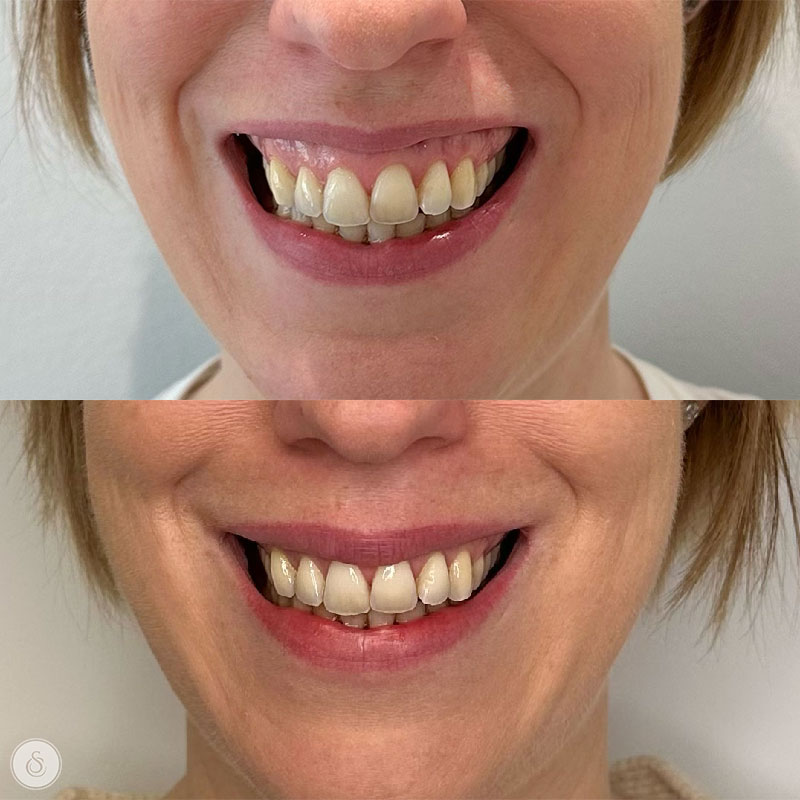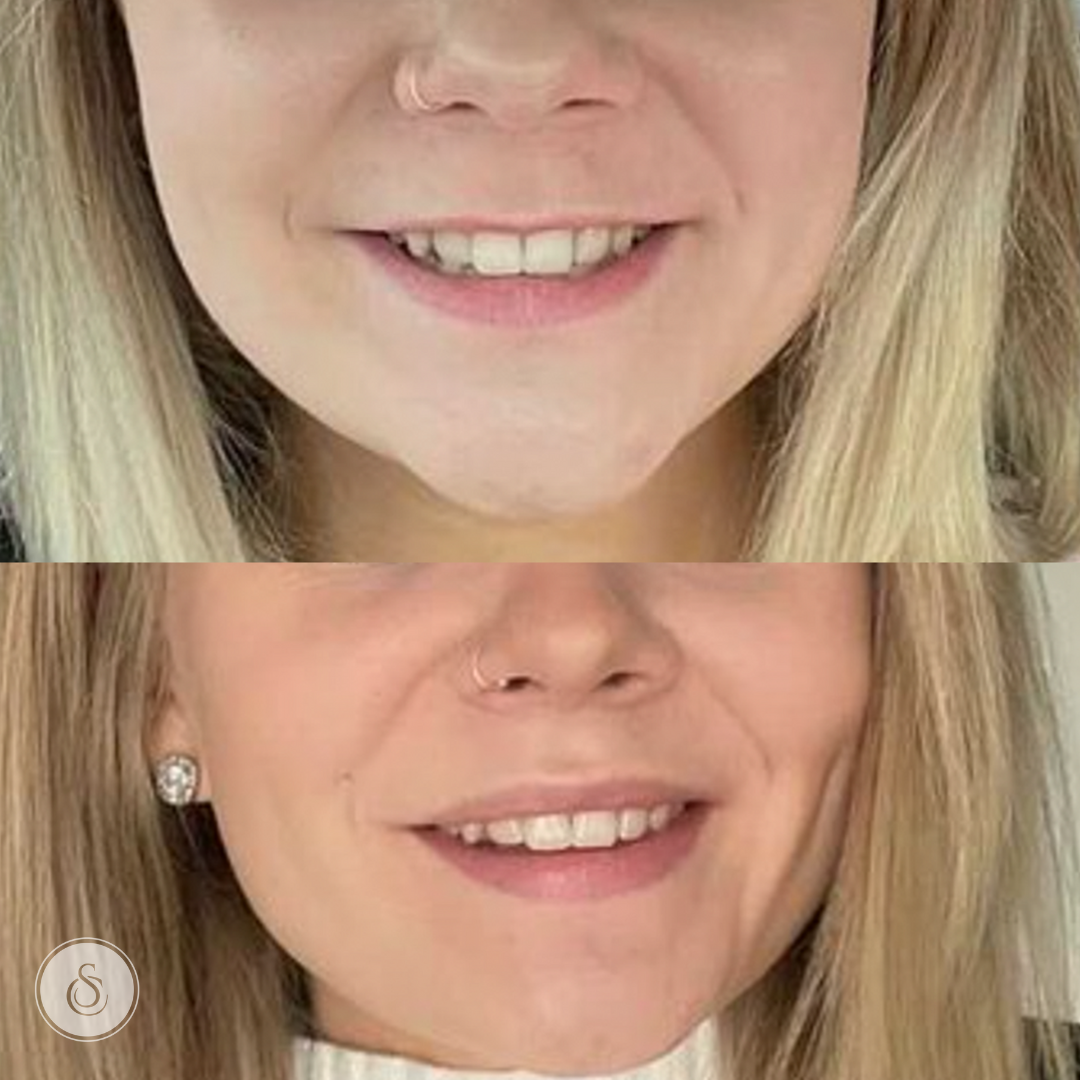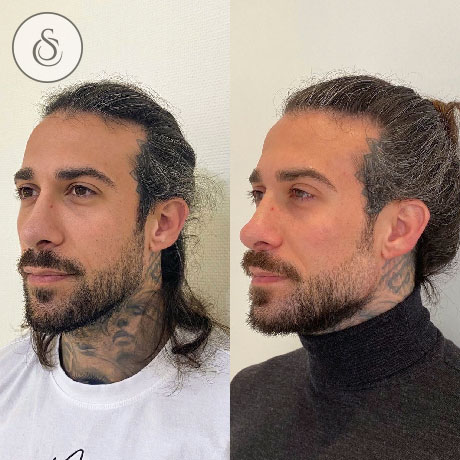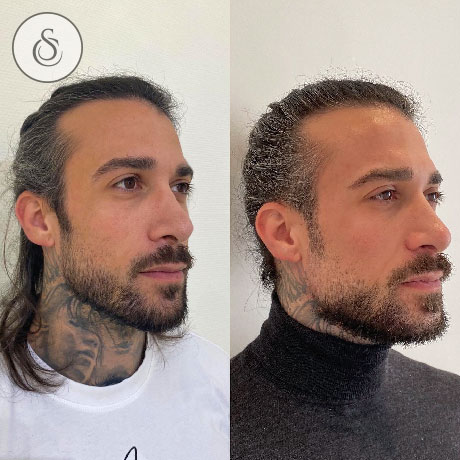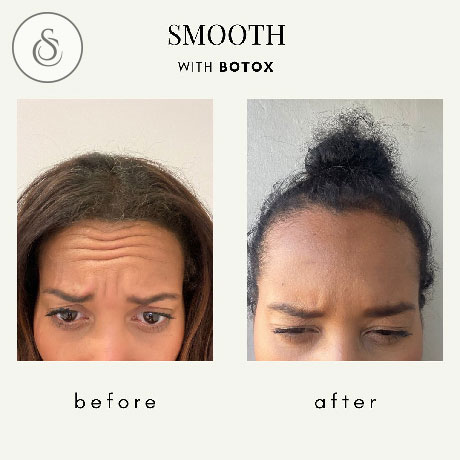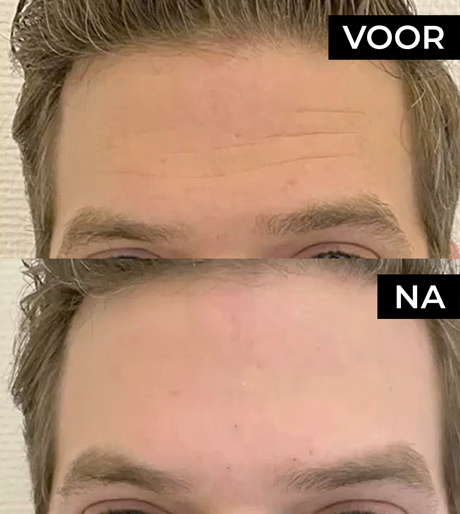Busting the myths: everything you need to know about Botox
The word "Botox" probably evokes a lot of associations in you. As such, Botox is one of the most well-known aesthetic procedures. Perhaps you immediately think of a certain celebrity or acquaintance, or think of the possibilities it can offer you.
A lot is said and written about Botox. But which of these associations are correct? We want to bring order to the chaos by clarifying once and for all what Botox is, what it is used for and what the pros and cons of the product are.
This text addresses the many myths circulating about botox treatment. We go over for you what is right and what is wrong and cite scientific arguments to back everything up.
What is Botox?
Before we pass along what the myths surrounding Botox are, we'd like to tell you what exactly Botox is. Because everyone knows it but few know exactly what it is and how it works. Are you ready for a little dose of science?
Botulinum toxin
The full name of Botox is botulinum toxin. That sounds a little more complicated anyway. Botulinum toxin is a neurotoxin produced by the bacterium clostridium botulinum. Neurotoxins are toxins and affect the functioning of our nervous system.
Botulinum toxin does this by blocking the transmission of impulses between muscle cells and nerve cells. You can also refer to Botox with "BTX. More simply put, Botox is a muscle relaxant or muscle relaxant.
Botox is not the only muscle relaxant
Surprise, Botox is not the only muscle relaxant. An example of another frequently used muscle relaxant is Azzalure. Today, the brand name Botox is often used as a generic name for muscle relaxants.
Just think of a "Botox treatment. Who knows, the treatment in question was not even done with Botox, but with Azzalure. Still, we tend to call it a Botox treatment.
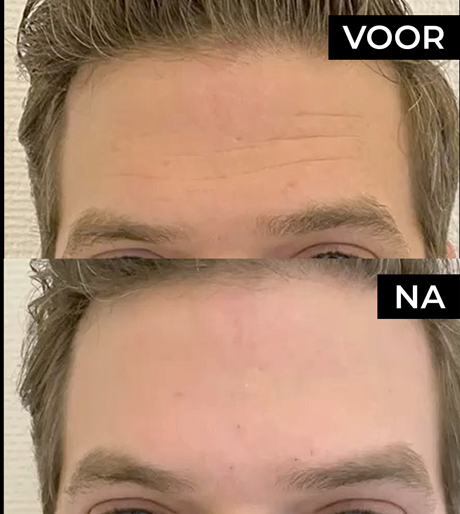
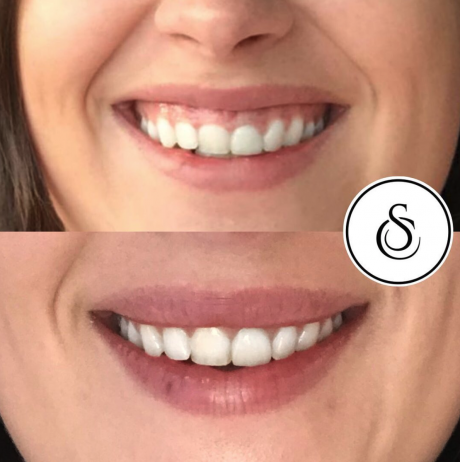
A brief history of Botox
- Many people think that Botulinum toxin has only been on the rise since the 21st century and that it is only used to fight wrinkles on the face. But nothing could be further from the truth. The substance was in the 19th century already researched by scientists.
- While it is true that today we know Botox primarily for its aesthetic capabilities, that is not the field in which botulinum toxin was first used. It is within the medical world that Botox began its rise as a remedy for certain neurological disorders.
- Thus, in 1989, it was used as an official drug against eye muscle spasms and blepharospasm (uncontrolled eyelid contractions). In fact, Botox allowed the eye muscles to relax.
- Over time doctors discovered that after injections of Botox near the eye, the wrinkles around the eye disappeared. From then on (early 1990s), scientists began experimenting with BTX in frown lines. In 2002, BTX was approved by the FDA for use in frown lines.
- Although it was only approved for frown lines, it was also used for crow's feet and forehead wrinkles. It wasn't until 2013 that it was legal to inject BTX for crow's feet. For forehead wrinkles, it was 2017.
- In turn, the aesthetic use of Botox led to some interesting medical discoveries. For example, it was aesthetic physicians who determined that botulinum toxin could also be used to address chronic migraines.
- To this day, researchers are still discovering new possibilities for which to use Botox. Botulinum toxin insertion techniques are also becoming more and more refined. Looking for a more comprehensive explanation of the history of botulinum toxin? Then you will the following study on Botox will certainly be of interest.
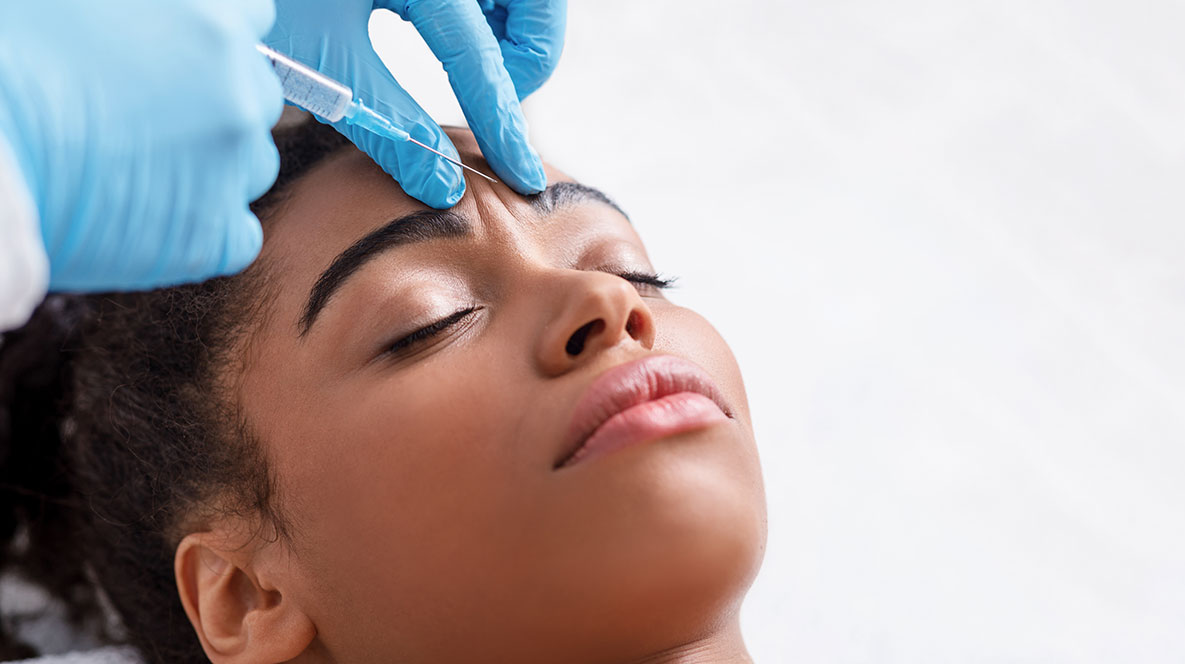
How does Botox work?
- Before we move on to the myths about Botox, it is crucial to understand how Botox works. Earlier you discovered that Botox is a muscle relaxant. But how do muscle relaxants work? What happens when you have your skin treated with Botox?
- Botulinum toxin is a protein that paralyzes the nerves that control muscles. Botox blocks the signal transmission between the nerve and the muscle. This causes the muscle(s) you had treated to contract less often.
- For example, suppose you often frown and as a result get deep furrows at the level of the top of your nose. By injecting Botox into that area, the signal transmission between the nerves and muscles will be stopped. As a result, you will make the frowning motion less often, resulting in fewer (deep) wrinkles in the treated area.
Myths about Botox
"Botox is harmful," "people don't know its long-term effects," or "it creates an expressionless face. You've probably heard statements like these at one time or another. But what is there to know about them? We list for you the most commonly heard myths about BTX and refute or validate them using scientific arguments.
Botox is harmful to health
- Is Botox dangerous? This question is often asked. The answer? In short, the aesthetic use of Botox by a skilled and experienced physician is not harmful.
- But that is not to say that Botox is never toxic. Botulinum toxin is a substance produced by a bacterium. It is a protein that occurs in nature and is very toxic. If you are infected with the bacteria through food, for example, it is very deadly. A gram botulinum toxin would be enough to take the lives of 1.5 million people.
- That sounds very frightening and, as a result, many people are afraid to use Botox. But that fear is unfounded. In medical and aesthetic use, BTX is used in extremely small amounts and in diluted form.
- In the medical world, for example, people also use Botox to treat certain conditions. In addition, it is important to note that only doctors have the authority to inject BTX.
- When you have your skin treated with Botox by a plastic surgeon, the Botox will only be injected at the underlying muscle of the area you want to treat. Thus, the substance is applied locally and does not spread throughout the body afterwards.
- To be extra sure that you are in good hands, you can opt for an attending physician at a licensed clinic who has experience with botox treatments. That one knows his dosages well and will apply the BTX in the right places.
No one knows the long-term effects of Botox
- This is a myth. As you can read earlier in this article, people were already using Botox in the 1990s. Meanwhile, we are about thirty years on. It would be rather crazy if there were no studies controughed on the long-term effects of treatments with Botox.
- An example of a long-term effect is muscle loss in the treated area. This effect occurs only in very rare cases (1% of cases). Meanwhile, Botox has been used for decades and is a safe drug used successfully in both aesthetic and medical fields.
Botox is the only drug that helps against wrinkles
- When people think of treatment for wrinkles, they often think of Botox. But did you know that Botox treatment is not the only way to address such signs of aging?
- The best remedy for wrinkles is the preventive use of sunscreen. Dermatologists cannot say it enough: lubricate, lubricate, lubricate! In addition to sunscreen, there are numerous topical creams that address signs of aging. Examples include ointments with a high concentration of vitamin A (retinol).
- Sometimes smearing is not enough and you need the "rough means" to address deep wrinkles. This is where fillers and BTX come in handy. What's the difference? You can read about that below.
Botox and fillers are the same thing
- People often assume that Botox and fillers are the same thing. Are they? Not at all. The action of the two products is completely different. For example, Botox is a muscle relaxant while fillers create volume in the skin.
- You use both products to address wrinkles. Certain wrinkles are better treated with BTX while other wrinkles are better removed with fillers. Which product you use depends on how the wrinkles were created.
- For example, you will treat wrinkles that come from skin sagging and loss of volume with fillers. Do you mainly suffer from expression wrinkles such as frown lines or crow's feet? Then Botox offers a better, structural solution. If you make an appointment at our clinic, we will look in detail at what treatment is needed for you.
Botox fills in wrinkles
- After answering the previous misconception, we immediately dispel another misconception about BTX and wrinkles, namely the idea that it would fill wrinkles. Botox does not fill the furrows and folds in your face. It does prevent them from appearing or deepening.
Injections with Botox are painful
- It sometimes happens that people are afraid of botox treatment because they have heard that it hurts. Although everyone's pain threshold is different, most patients do not experience the treatment itself as painful.
- You could describe it as a pinprick: unpleasant, but not too painful. After the botox treatment, you may experience pain in the treated area due to any bruising and swelling that occurs on the skin, but in general these kinds of side effects are exceptional.
Botox is permanent
- One of the biggest misconceptions about botox treatments is that their results would be permanent. BTX actually disappears from the treated area after a few months as the body breaks down the substance itself.
- Thus, the results of Botox are not permanent. Over time, the muscles will resume their normal function. If you want to continue preventing wrinkles, you will have to repeat the Botox treatment every x number of months.
- The time you can leave between treatments is different for everyone. For example, the interval between each treatment will be shorter in athletes because they break down botulinum toxin faster. In general, most patients repeat treatment every 4 to 5 months.
Botox accumulates in the body
- Does BTX accumulate in the body? You hear it here and there, but that's not the case. The substance is completely broken down by the body itself several months after botox treatment.
Botox is used only to address wrinkles
- If you have read the full article, you already know that this is a myth. The effect of botulinum toxin extends beyond just fighting wrinkles. It is not only used for cosmetic treatments such as wrinkles. For example, it can also be used for a lot of medical applications.
- Thus, botulinum toxin can also be used to address excessive sweating and migraines. For the teeth grinders among us, there is also good news. Also bruxism (teeth grinding) can also be treated with BTX. Your teeth (and your dentist) will thank you for it.
- So you see, botulinum toxin is not just used for cosmetic applications or wrinkles. It can be used for numerous purposes. Discover on our website what you can use BTX for.
The result of a botox treatment is immediately visible
- Unfortunately, this is too good to be true. When you leave the clinic, the final result of the botox treatment will not yet be visible. The results will only be visible in the treated area after a few days.
- The maximum effect of the treatment is visible only after four weeks. After eight weeks, it gradually begins to have less effect, and after four to five months, the effects of the treatment are still nil.
Botox creates an expressionless face
- This argument is often used by people who are "against" Botox. It is said to give you an expressionless face. In most cases, this argument is a myth. If you were to have your entire face treated with a high concentration of BTX, you might indeed end up with an unnatural result.
- In most cases, however, extremely small amounts are used so that the underlying muscles are not paralyzed. Especially with treatments for crow's feet and frown lines, there is little chance of losing your ability to express yourself.
- At treatments of the forehead you may experience temporary drooping eyebrows, for example. However, a knowledgeable doctor will know where to place the Botox to minimize the natural features and movements of the face.
- So the message is: choose (especially for the first treatment) a low concentration and a good, experienced doctor. That way, you will still be able to express your anger, joy or surprise with your face.
Botox is addictive
- If the media is to be believed, botox treatment seems very addictive. But is it really? It certainly can be for some people. Everyone has seen someone for whom it was just too much is.
- This is why it is important to choose a reputable clinic with knowledgeable doctors. At Sarasin, we value ethics highly. If we note that a patient wants too much or is pursuing an unattainable ideal image, we do not perform botox treatment.
Once you start botox treatments, you may never stop
- You may have heard it too: when you start a Botox treatment, there is no end. People think that if you stop using Botox, your face will look different.
- It's hard to know where this misconception comes from. If after a botox treatment or after several years you decide you want to quit because it's not for you, you never have to repeat the treatment.
- What happens next? After the last treatment, the BTX will slowly wear off and leave your body. While that is happening your muscles will resume their normal functioning. As your muscles resume normal function, the wrinkles in the treated area will slowly return. Don't worry, the wrinkles will not suddenly be worse, deeper or larger than they were before the treatment(s).
Botox treatment is not for young people
- This persistent myth is incorrect. Of course, BTX is primarily known for fighting wrinkles, but in addition, it has many other capabilities besides wrinkle treatment. In addition, we see that Botox is increasingly used at a young age to avoid incipient wrinkles.
- Young people can also use Botox for reasons other than prevention of crow's feet and frown lines. For example, consider people with a gummy smile, where the gums become visible when they smile. Young people who have visible gums when smiling and feel insecure because of it can use BTX.
- Or consider young people with migraines. They too can benefit from botox injections. Furthermore, people who suffer from excessive sweating may also be helped by botox injections.
Botox is only for women
- This statement is the epitome of toxic masculinity. Everyone is insecure about certain features and everyone's skin shows signs of aging. Why should BTX be only for women?
- You sometimes hear the phrase 'real men wear pink'. Well, we say: 'real men do Botox'. Botox treatment is for everyone who wants it. In our clinic we regularly have men coming in, and there is nothing wrong with that.
After reading, do you still have questions about Botox? Then book a no-obligation consultation with a plastic surgeon doctor at our clinic.
Videos about botox
Botox before & after pictures
Cost of botox
| Prices muscle relaxer/Botox treatments | |
|---|---|
| Muscle relaxants / Botox / Baby Botox | price per zone |
| 1 zone (ex: frown or forehead or crow's foot) | €120 |
| 2 zones (e.g., frown + crow's feet) | €200 |
| 3 zones (e.g., frown + forehead + crow's feet) | €280 |
| BTX Jelly Roll | €60/treatment |
| BTX Bunny Lines | €60/treatment |
| BTX Neustiplift | €60/treatment |
| Gummy smile | €60/treatment |
| BTX Lip Flip | €60/treatment |
| BTX Chin | €60/treatment |
| Brow lift | €100/treatment |
| Resorius BTX | €60/treatment |
| BTX Mouth corners | €120/treatment |
| BTX crow's feet | €120/treatment |
| BTX Migraine | from €120 |
| Bruxism (teeth grinding) | €280/treatment |
| Face slimming | €280/treatment |
| Platysma Banding | €280/treatment |
| Nefertiti Neck Lift | €350/treatment |
| Lower Face BTX | €400/treatment |


